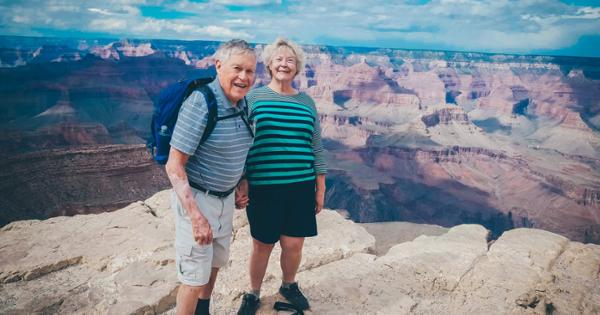Technically, they met on the ETSU campus – not in a classroom, but in a lab at the
Gray Fossil Site back in 2016.
And their official first date was an end-of-semester party for a geosciences class
both were auditing.
Collins Chew and Janice Hornburg weren’t the typical college students. Both were relishing
life in their golden years. Collins had been married for more than 60 years and was
now a widower. Janice had been married when she was younger but had been single for
37 years…with no plans to change her status.
They volunteered at the site together, had lunch together, hiked together, and decided
to take a trip down the aisle together in 2018.
“We would sit at microscopes together in the lab, and Collins was constantly talking with another volunteer, Mike Jones, about geology,” she recalls. “All of this was way over my head, so I decided to audit a class and convinced Collins to do the same.”
Mike was a retired geologist and friend of Collins who actually moved to Tennessee
to be involved with the fossil site.
Collins was first diagnosed with melanoma in 2014. With each recurrence, he would
undergo treatment and enjoy periods of remission that spanned anywhere from six months
to 2-3 years.
His last remission was for three years.
“He called that his ‘bonus life,’” Janice remembers. “It was during most of that last
remission that we were married.”
Following a recurrence in spring 2020, Collins passed away that December.
After spending two years as a lieutenant in the U.S. Army, Collins built his career
as a chemical engineer at Eastman Chemical Company, but his true passion was geology
– especially paleontology.
“It all began when he was in college and worked a summer job at a placer mine near
Fairbanks, Alaska,” Janice recalls. “His job was manning a water gun that was used
to melt the permafrost so that miners could dredge the sediments for gold nuggets.
The water guns washed out many ice-age fossils from the gold-bearing gravels. Collins
has photos of the summer crew posing with huge mammoth tusks and steppe bison horns.
“One of the most complete fossils when Collins was on site was a steppe bison mummy
which is still on display at the Smithsonian Museum. And for the rest of his life,
Collins was hooked on the study of fossils!”
Just imagine his excitement when mysterious bones were discovered in May 2000 during
a road construction project in Washington County. As the history books go, those bones
led to the discovery of what became the Gray Fossil Site.
Collins was part of that history from page one.

“He was active with this project from the very beginning,” Janice said. “He got permission to take some of the bones around to do community presentations about the discovery, and he even helped start the Friends of the Gray Fossil Site organization.”
Following Collins’ passing, Janice wanted to honor her late husband’s memory by supporting
the vast educational opportunities presented by the Gray Fossil Site.
“Collins had a great interest in education and wanted to support students by making
it possible for them to attend major conferences and conduct research,” she said.
Janice, along with family, friends, and even Collins’ physician, contributed $30,000
to create the V. Collins Chew Endowment for the Gray Fossil Site and Museum to support
educational activities for students at the Gray Fossil Site. Janice has also indicated
that she plans to include ETSU in her estate plans.
“This fossil site was a place where he devoted many years, and there was no better way to memorialize him.”
For more information on the V. Collins Chew Endowment for the Gray Fossil Site and Museum, contact Dr. Blaine Schubert at schubert@etsu.edu.
 ETSU to test emergency notifi...
ETSU to test emergency notifi...